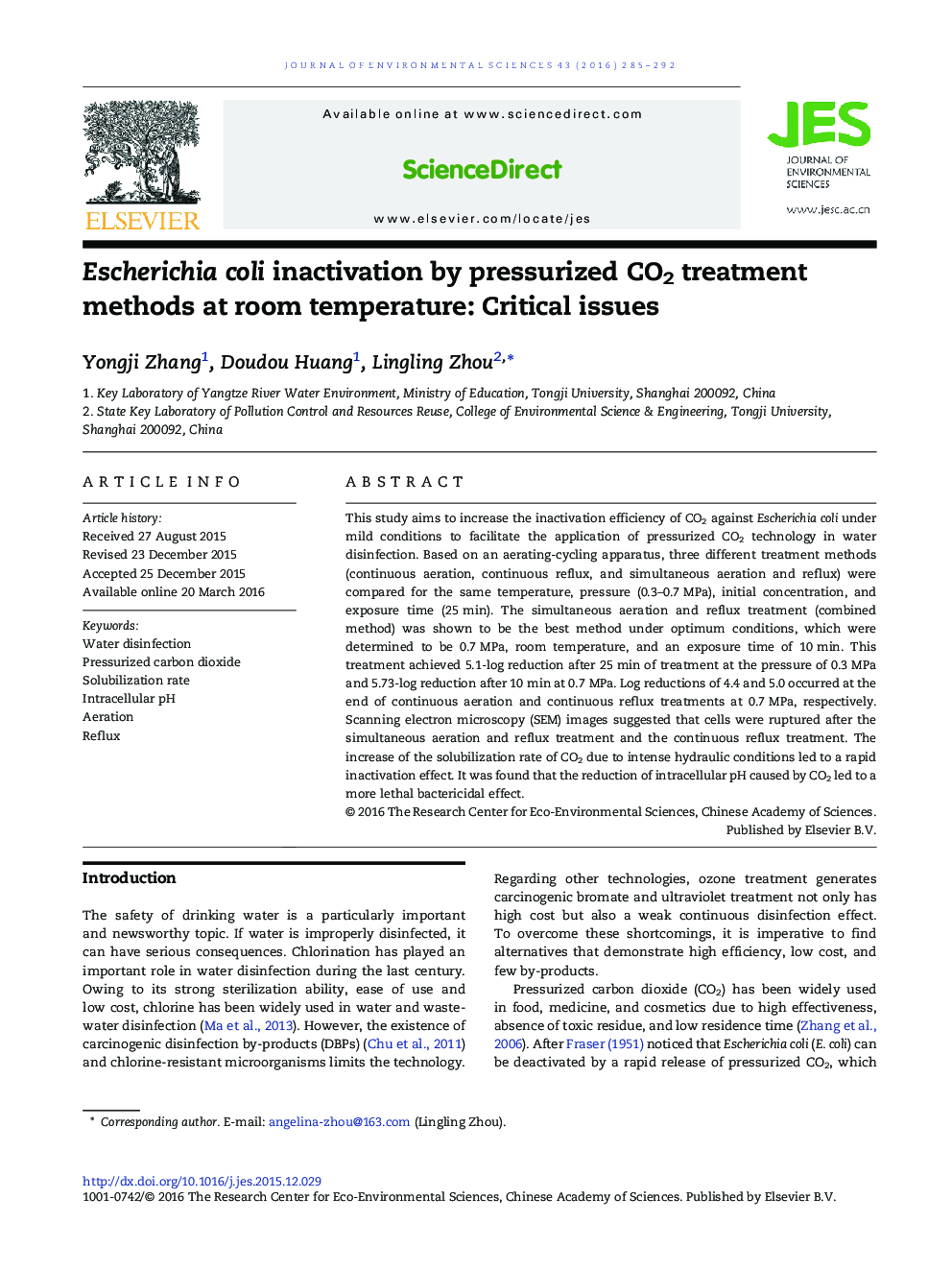| Article ID | Journal | Published Year | Pages | File Type |
|---|---|---|---|---|
| 4453682 | Journal of Environmental Sciences | 2016 | 8 Pages |
This study aims to increase the inactivation efficiency of CO2 against Escherichia coli under mild conditions to facilitate the application of pressurized CO2 technology in water disinfection. Based on an aerating-cycling apparatus, three different treatment methods (continuous aeration, continuous reflux, and simultaneous aeration and reflux) were compared for the same temperature, pressure (0.3–0.7 MPa), initial concentration, and exposure time (25 min). The simultaneous aeration and reflux treatment (combined method) was shown to be the best method under optimum conditions, which were determined to be 0.7 MPa, room temperature, and an exposure time of 10 min. This treatment achieved 5.1-log reduction after 25 min of treatment at the pressure of 0.3 MPa and 5.73-log reduction after 10 min at 0.7 MPa. Log reductions of 4.4 and 5.0 occurred at the end of continuous aeration and continuous reflux treatments at 0.7 MPa, respectively. Scanning electron microscopy (SEM) images suggested that cells were ruptured after the simultaneous aeration and reflux treatment and the continuous reflux treatment. The increase of the solubilization rate of CO2 due to intense hydraulic conditions led to a rapid inactivation effect. It was found that the reduction of intracellular pH caused by CO2 led to a more lethal bactericidal effect.
Graphical abstractFigure optionsDownload full-size imageDownload as PowerPoint slide
